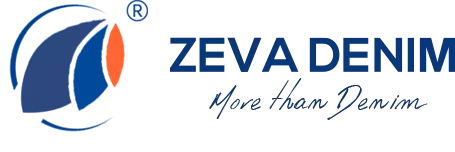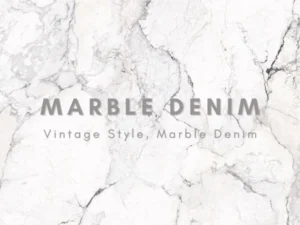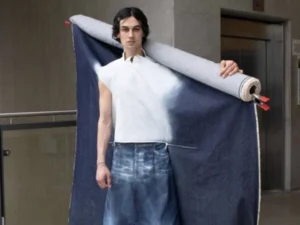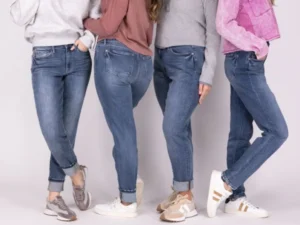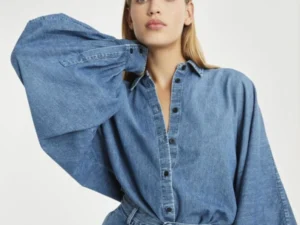Last time we talked about the first two steps of denim fabric manufacturing. Today we will continue on the most colorful step, the dyeing steps. Below is today’s agenda:
- Denim Fabric Manufacturing
- Overall Denim Fabric Manufacturing
- What is Rope Dyeing?
- Advantages of Rope Dyeing in Denim Fabric
- What is Slasher Dyeing?
- Advantages of Slasher Dyeing
- Conclusion
Denim Fabric Manufacturing
Before we delve into the dyeing process, it is essential to understand the journey of denim fabric from its raw materials to the finished product. Denim is made primarily from cotton fibers, which undergo a series of processes from cultivation to yarn production. Cotton cultivation involves planting, harvesting, and ginning to separate the fibers from the seeds.
Afterward, the cotton fibers are processed further to remove impurities and create a consistent quality for yarn production. Yarn production involves spinning the fibers into yarn, while warp preparation includes processes like sizing and warping to prepare the yarn for the weaving process.
Overall Of Denim Fabric Manufacturing
The dyeing process is a crucial stage in denim manufacturing as it imparts color to the fabric. Before dyeing, the denim fabric undergoes pre-treatment processes to ensure optimal dye absorption. These processes include desizing, which removes the starch-based sizing agents applied during warp preparation, scouring, which eliminates impurities and oils, and optional bleaching to achieve a lighter shade, if desired.
Denim fabric dyeing techniques encompass various methods, including indigo dyeing, sulfur dyeing, and reactive dyeing. Indigo dyeing is the most widely used technique and gives denim its characteristic deep blue color. Sulfur dyeing is used to achieve darker shades, while reactive dyeing offers a broader color palette and allows for intricate designs.
Different application methods are employed to dye denim fabric, including rope dyeing, slasher dyeing, and continuous dyeing. Rope dyeing involves winding the fabric into a rope-like structure, while slasher dyeing utilizes a continuous warp sizing machine. Continuous dyeing is a high-speed and efficient method that enables dyeing during the twisting process. Here we mainly introduce the first two most popular dyeing methods: Rope Dyeing and Slasher Dyeing.
What is Rope Dyeing?
Rope dyeing is a traditional dyeing technique that has played a significant role in the denim industry. With a rich history that dates back to the early 20th century, rope dyeing is renowned for its ability to create vibrant, long-lasting colors and unique fading patterns. This method involves using ropes to gradually dye the fabric, resulting in a uniform and deep color saturation. Its importance in the denim industry cannot be understated, as it contributes to the durability, aesthetic appeal, and overall quality of denim products.
The rope dyeing process typically consists of several important steps. First, the cotton fibers are spun into yarns, usually with a tight and dense structure to ensure optimal dye penetration. These yarns are then twisted together to form a long rope. The rope is carefully dipped into a vat of indigo dye and left to soak for a specific period. After each dip, the rope is squeezed and exposed to air, allowing the indigo to oxidize and develop its signature blue hue. This process is repeated until the desired shade is achieved.
Advantages of Rope Dyeing in Denim Fabric
- Superior Color Fastness
One of the significant advantages of rope dyeing is its exceptional color fastness properties. This means that denim fabric produced through this method retains its color for a more extended period, even with frequent washing and usage.
- Resistance to Fading and Bleeding
Rope-dyed denim exhibits superior resistance to fading, maintaining its rich indigo hue for a significantly longer time compared to other dyeing techniques. This provides denim garments with a vibrant and authentic appearance that develops unique wear patterns over time. Additionally, the low level of dye bleed ensures that the color remains intact without transferring onto other surfaces or fabrics.
- Increased Durability
Rope-dyed denim is renowned for its remarkable durability. The repeated dyeing process enhances the penetration of the indigo pigment into the core of the fibers, resulting in increased strength and resistance to wear and tear. This robustness makes rope-dyed denim ideal for creating long-lasting and reliable garments.

- Unique Aesthetics
Apart from its exceptional color fastness, rope dyeing also offers unique aesthetic characteristics, adding to the allure and desirability of denim fabric.
- Varied Shading and Depth
The rope dyeing process creates an effect known as “three-dimensional color.” The multiple dips and oxidization stages produce variations in the shade of blue, creating a textural and dimensional appearance. This gives denim garments a depth that is highly valued by denim enthusiasts and fashion-forward individuals.
- Aging and Fading Characteristics
Rope-dyed denim has a remarkable ability to develop distinct wear patterns and become more personalized over time. As the indigo dye gradually fades, the fabric takes on a classic and vintage-like appearance, resulting in a truly individualized garment that tells a story through its unique fades and creases.
What is Slasher Dyeing?
Slasher dyeing is a crucial technique in the textile industry that allows fabrics to acquire vibrant and long-lasting colors. This article aims to provide a comprehensive beginner’s guide to slasher dyeing, covering the basics, advantages, principles, fabric suitability, practical applications, challenges, solutions, and innovations in this dyeing process. By understanding the intricacies of slasher dyeing, one can appreciate its significance in the textile industry while exploring its potential for achieving consistent results, increased efficiency, and sustainable practices.
- The Basics of Slasher Dyeing
Slasher dyeing involves the immersion of fabric into a dyeing bath to achieve the desired color. The slasher dyeing machine plays a crucial role in this process, as it ensures uniform dye penetration through continuous movement and tension control. The flowchart of slasher dyeing includes steps such as fabric loading, pre-washing, dye liquor preparation, dyeing, rinsing, and drying, all of which contribute to successful coloration and fixation.
Advantages of Slasher Dyeing
The slasher dyeing technique offers various advantages in the textile industry. Firstly, it results in consistent and high-quality coloration, ensuring uniformity across the fabric. This is vital for a range of applications, such as in apparel where color consistency is crucial. Secondly, slasher dyeing increases production efficiency by allowing for large batch sizes and reduced handling time. Lastly, it promotes sustainability by minimizing water and energy consumption compared to other dyeing methods.
- Factors Influencing Dyeing Timing
Determining the appropriate timing for dyeing plays a critical role in achieving desired results. One factor to consider is whether to dye the fabric before or after weaving. Dyeing before weaving allows for better color penetration and consistency, as well as the flexibility to create unique designs. On the other hand, dyeing after fabric formation offers versatility in terms of color and pattern variations.
- Practical examples
Dyeing before weaving is commonly seen in traditional denim manufacturing processes. This method ensures uniform color throughout the fabric and provides a foundation for fading and distressing techniques. In contrast, modern denim manufacturing often involves dyeing after fabric formation, allowing for greater customization and faster production cycles.
Conclusion
Dyeing plays a vital role in denim fabric manufacturing, transforming raw materials into the fashionable and versatile fabric we know today. Understanding the stages involved in dyeing, such as pre-treatment and various dyeing techniques, helps ensure optimal color absorption and desired fabric characteristics. Factors like the timing of dyeing, whether before or after weaving, also influence the final appearance of denim fabric. As trends evolve, denim dyeing continues to innovate, creating exciting possibilities for the future of this beloved textile.
Happy Reading!
